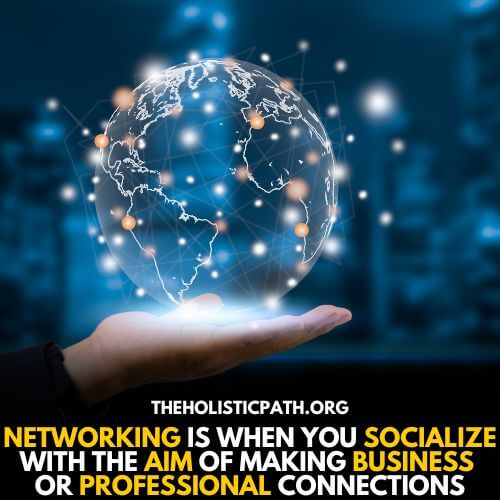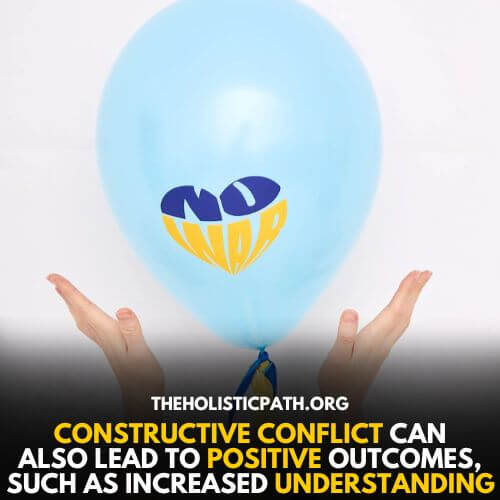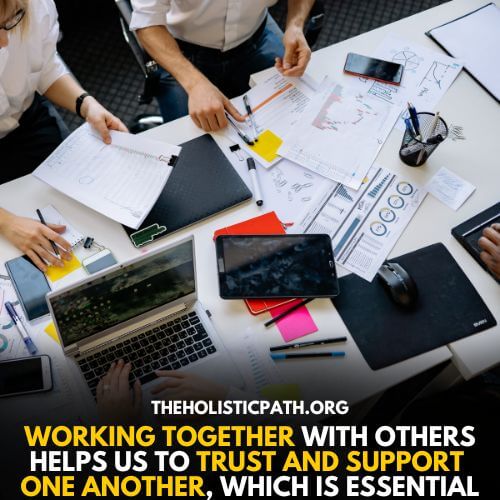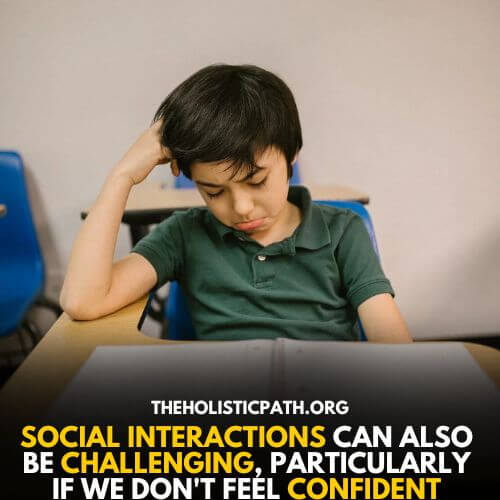Most of us are familiar with the term “social interaction,” but what does it mean? Simply put, social interaction is any kind of communication between two or more people. This can include anything from a casual conversation to more formal exchanges like transactions or negotiations.
There are many different types of social interactions, but they can broadly be grouped into 5 types of social interactions: social exchange, conflict, competition, cooperation, and accommodation. In this article, we’ll take a closer look at each of these types of social interaction and explore some examples.
So whether you’re looking to brush up on your social skills or just curious about how we interact with each other, read on!
What Is Meant By Social Interactions
Social interactions are how people interact with each other. This can include anything from the conversation and body language to the way we dress and present ourselves. Social interactions are important because they help us to build relationships, communicate effectively, and understand others. They also allow us to learn about new people and cultures.
Social interactions can be positive or negative, depending on the situation.
For example, a positive social interaction might be meeting someone new and sharing a laugh, while a negative social interaction might be getting into an argument with a friend. Social interactions are a basic part of human nature, and we all need to interact with others to function properly in society.
Social Interaction: 9 Different Elements
Social interactions are how people interact with each other. They can be categorized by their social status, role theory, role conflict, culture, social class, groups, social institutions, social networks, and virtual worlds.
- Social status is the relative position that an individual occupies within a social hierarchy. It is determined by a combination of factors including ancestry, age, gender, physical appearance, race, religion, and social class.
- Role theory is the idea that people adopt different roles in different situations. For example, a person may be a son or daughter at home, a student at school, or an employee at work. Each role comes with its own set of expectations and responsibilities.
- Role conflict occurs when someone is trying to fulfill two or more roles that conflict with each other. For example, a working mother may feel torn between her responsibilities as an employee and her responsibilities as a parent.
- Culture refers to a group of people’s shared values, beliefs, and norms. It influences how people think and behave.
- Social class is a division of society based on economic status. It can be used to define someone’s social position within the hierarchy.
- Groups are two or more people who interact with each other and share some common characteristics. They can be categorized by their size (such as family or community), shared interests (such as sports teams or book clubs), or purpose (such as support groups or political parties).
- Social institutions are organizations that exist to serve the needs of society. They include families, schools, businesses, and government agencies.
- Social networks are relationships between people who share common interests or goals. They can be online (such as Facebook) or offline (such as blood relatives).
- Virtual worlds are computer-generated environments where people can interact with each other. They can be MMOs (massively multiplayer online games) or social media platforms (such as Second Life).
Examples Of Social Interactions
There are all sorts of social interactions. Here are some examples:
- Talking to someone you know: This could be a friend, family member, colleague, or acquaintance. You might chat about the weather, and current events, or just catch up on what’s been going on in each other’s lives.
- Making small talk: This is the type of social interaction that often happens when you’re meeting someone for the first time, or when you’re in a situation where you don’t know anyone very well. The conversation is usually fairly superficial, and it might touch on topics like the weather, current events, or popular culture.
- Networking: This is when you socialize to make business or professional connections. You might go to industry events, meetups, or online forums to meet potential clients or collaborators.

5 Types Of Social Interactions
Social interactions are the building blocks of our society. They allow us to interact with others, form relationships, and create communities. There are 5 main types of social interaction: social exchange, conflict, competition, cooperation, and accommodation.
1. Social Exchange
Social exchange is a type of social interaction that occurs when two or more individuals engage in some sort of exchange, usually to obtain some benefits. The 5 main types of social exchanges are dyadic, communal, market, network, and public.
- Dyadic social exchange is the most basic form of social interaction and involves two individuals interacting with each other.
- Communal social exchange occurs when individuals share resources without expecting anything in return.
- Market social exchange is based on the principle of quid pro quo, or “something for something.” In a market exchange, both parties involved expect to receive something of equal value in return for what they are giving.
- Network social exchange occurs when individuals interact with each other through a shared network of relationships.
- Public social exchange occurs when individuals interact with each other in a public setting, such as a park or sidewalk.
Social exchange theory posits that all social interactions are based on some form of exchange, whether it be exchanging goods, services, information, or even emotions. This theory can help to explain why people behave the way they do in different types of social situations.
2. Conflict
Conflict is a type of social exchange that can occur between any two people. The 5 main types of social interaction are dyadic, triadic, collective, institutional, and mass.
Dyadic conflict occurs between two people, triadic conflict occurs among three people. Collective conflict occurs within a group or organization, institutional conflict occurs between two organizations, and mass conflict occurs between entire societies.
Conflict arises when people have different goals, values, or beliefs. When people interact, they usually do so to achieve some goal. However, sometimes people have conflicting goals, which can lead to conflict.
For example, two people may both want to use the same resources (such as land), or they may have different ideas about how to achieve a shared goal (such as how to best solve a problem).

Conflict can be either constructive or destructive.
Constructive conflict leads to positive outcomes, such as increased understanding or cooperation. Destructive conflict leads to negative outcomes, such as violence or mistrust. It is important to try to resolve conflicts constructively whenever possible.
3. Competition
Competition is a social interaction where two or more individuals interact with each other to obtain resources or dominance. The types of resources that can be obtained through competition are food, water, shelter, and mates.
The interaction between the individuals can be physical or verbal. Physical competition involves the use of physical force to obtain the desired resources. The verbal competition involves the use of verbal communication to achieve the desired goal.
Competition is a social interaction because it requires two or more individuals to interact with each other.
Competition occurs when the resources that the individuals are competing for are limited. The most common examples of competition are sports, business, and politics. In sports, the competitors are vying for the prize money, trophy, or title.
In business, the competitors are vying for customers, market share, or profits. In politics, the competitors are vying for votes, power, or influence.
Competition can be either healthy or unhealthy. Healthy competition is when the participants compete fairly and honestly. Unhealthy competition is when the participants resort to cheating, violence, or other un-sportsman-like conduct to win.
Healthy competition encourages participants to improve their skills and strategies.
It can also be a positive force that drives individuals to improve their skills and work harder to achieve their goals. In any case, competition is a fundamental part of social interactions and has a major impact on our lives. Unhealthy competition can lead to negative emotions such as resentment, envy, and jealousy.
4. Cooperation
There are many different types of social interactions, but one of the most important is cooperation. Cooperation is when two or more people work together to achieve a common goal.
This can be something as simple as carrying a heavy object, or it can be something more complex like solving a problem. Either way, cooperation is essential for human society to function.
There are several reasons why cooperation is so important. First, it allows us to pool our resources and knowledge. When we work together, we can accomplish things that we couldn’t do on our own. Second, cooperation helps us to build relationships.

Working together with others helps us to trust and support one another, which is essential for any strong community. Finally, cooperation instills a sense of pride and accomplishment. When we work together towards a common goal, we can feel a sense of ownership and satisfaction that comes from knowing that we have contributed to something larger than ourselves.
So next time you’re working on a project with others, remember the importance of cooperation. By working together, we can achieve great things!
5. Accommodation
Most people are familiar with the concept of accommodation, even if they don’t realize it. Simply put, accommodation is a type of social interaction in which people adjust their behavior to suit the situation. For example, imagine you’re at a friend’s house for dinner.
You know they’re vegetarian, so you don’t order the steak. Instead, you order a vegetarian option. This is an example of accommodation – you’ve made a small change to your behavior to be respectful of your friend’s beliefs.
Of course, accommodation doesn’t always have to be so literal.
It can also be more subtle. For example, let’s say you’re at a work function and you notice that your boss is having a bad day. Rather than approach them and ask what’s wrong, you decide to give them some space. Again, this is an act of accommodation – you’re changing your behavior to avoid making the situation worse.
In many ways, accommodation is the glue that holds social interactions together.
By being willing to make small adjustments to our behavior, we can navigate social situations more smoothly and avoid potential conflict. So next time you find yourself accommodating someone, just remember – you’re helping to grease the wheels of social interaction!
Effects Of Lack Of Social Interaction
When we socialize, we interact with others. We communicate with them through verbal and nonverbal means, and we exchange ideas and feelings.
This back-and-forth interaction is essential for our mental and emotional well-being. Social interaction allows us to develop relationships, share experiences, learn new things, and have fun. It also helps us to gain a better understanding of other people and the world around us.
When we don’t have social interaction, a few things can happen.
For one, we can become more isolated and withdrawn. We may start to feel like we’re not part of the world and that can lead to depression. Additionally, we miss out on important social cues and opportunities.
We can also become less empathetic and understanding of others. Finally, we may have trouble regulating our emotions and end up feeling more anxious or stressed. In short, social interaction is important for our mental and emotional well-being.
If we don’t have it, we can start to feel pretty lonely and lost.
Here Are 5 Effects of Lack of Social Interaction
- Loneliness and Isolation: Individuals who lack social interaction can experience feelings of loneliness, isolation, and withdrawal from society. This can lead to depression, anxiety, and other mental health issues. Individuals need to stay socially connected to prevent these feelings from occurring.
- Decreased Cognitive Ability: Studies have shown that lack of social interaction is associated with a decline in cognitive ability. This may include memory loss, difficulty concentrating, impaired decision-making skills, and slowed reaction times. Socializing with others helps stimulate the brain, increasing cognitive ability.
- Health Issues: Due to the stress that often accompanies a lack of social interaction, individuals may be more prone to physical health issues such as heart disease or stroke. Additionally, isolated individuals may not engage in physical activity or exercise as much as those with an active social life which can lead to further health concerns such as obesity or diabetes over time.
- Reduced Empathy: Research has shown that spending time with others helps build empathy and understanding of different points of view; however when individuals do not socialize they are less likely to feel empathy for others since they are not able to relate or understand their experiences without any context or prior knowledge on the topic at hand.
- Low Self-Esteem: When people lack social interaction they often feel disconnected from society leading them to develop low self-esteem due to their inability to fit in with those around them or build close relationships with friends and family members alike; this can then cause further mental health issues such as decreased motivation and self-worth leading ultimately towards depression & anxiety if left untreated for long periods.
Of course, everyone needs some time alone occasionally, but social interaction is important for our mental and emotional well-being. So if you’re feeling lonely, make an effort to connect with other people.
Join a club or group, go out with friends, or simply strike up a conversation with someone you see every day. You’ll be glad you did!
12 Easy Ways To Improve Social Interactions
Social interactions are a necessary part of life. They help us to connect with others, build relationships, and communicate effectively. However, social interactions can also be challenging, particularly if we don’t feel confident or comfortable in social situations.

Here are 12 tips to help you improve your social interactions:
- Make eye contact and smile when interacting with someone: Making eye contact and smiling during conversation can help create a more positive atmosphere, as it conveys interest in the other person and indicates a willingness to listen. Additionally, smiles often evoke reciprocal smiles from others, helping to break down any barriers between people.
- Be open-minded when conversing: It is important to enter conversations with an open mind, being attentive and willing to learn from what another person has to say. This can help foster greater understanding between two people and make interactions more meaningful.
- Pay attention to non-verbal cues: Non-verbal cues such as body language can provide valuable insight into how someone may be feeling or how they are responding to the conversation at hand. Paying attention to small details such as facial expressions, posture, or tone of voice can help individuals better understand one another and ensure that their conversations remain positive and productive.
- Show active listening skills: Active listening entails not only hearing what someone is saying but also attempting to comprehend the meaning behind their words by asking questions or providing comments that show understanding of the other person’s point of view. This helps build trust between two individuals and improves communication overall.
- Respect others’ opinions: Everyone has different thoughts, feelings, beliefs, and points of view; respecting these differences is key for creating harmonious social interactions that value each individual’s opinion equally rather than engaging in debates or arguments over who is “right” or “wrong”.
- Listen twice as much as you speak: In order for conversations to be truly meaningful, it is important for all parties involved to have an equal share of speaking time. Therefore, it is beneficial for one person to actively listen twice as much as they speak in order for everyone’s voice to be heard without interruption or judgment from another party involved in the discussion.
- Ask open-ended questions: Open-ended questions encourage thoughtful responses that provide more information than a simple yes/no answers do; they invite people into dialogue which deepens our understanding of one another while simultaneously strengthening connections between those participating in the conversation.
- Avoid making assumptions about others: Making assumptions about other people based on little information can cause interpersonal tension by perpetuating stereotypes or false impressions of those we interact with on a daily basis; avoiding this habit allows us to get a better sense of who someone truly is instead of forming opinions based off limited facts.
- Participate in community events: Community events such as festivals or local gatherings offer ample opportunity for members within a community to meet one another face-to-face; this creates an environment where individuals can bond over shared interests, develop friendships with like-minded peers, all while getting out into the real world and taking part in activities outside of their comfort zones.
- Use humor appropriately during social interactions: Appropriate use of humor during social interactions can help lighten the mood while still maintaining respect among those conversing; laughter often breaks down walls between people so long as everyone remains mindful not to cross any boundaries set by either party.
- Be mindful when engaging online: Interactions online should mirror those found offline; showing respect towards others by avoiding cyberbullying or trolling which are both damaging behaviors that negatively impact conversations.
- Try new activities together: Participating in new experiences together provides an ideal platform for meaningful conversation away from distractions like cell phones or televisions; exploring new hobbies together allows individuals within a group setting to become acquainted on a different level through common interests.
Conclusion
So there you have it – 5 different types of social interaction. Obviously, there’s a lot of overlap between these categories, and people can (and do) move freely between them. But it’s helpful to be aware of the different ways we interact with others and to think about which ones we feel most comfortable with. Do you tend to gravitate toward one particular type of interaction, or do you like to mix things up?
References
Chiang, J. J., Eisenberger, N. I., Seeman, T. E., & Taylor, S. E. (2012). Negative and competitive social interactions are related to heightened proinflammatory cytokine activity. Proceedings of the National Academy of Sciences, 109(6), 1878–1882. https://doi.org/10.1073/pnas.1120972109
Shores, R. E. (1987). Overview of Research on Social Interaction: A Historical and Personal Perspective. Behavioral Disorders, 12(4), 233–241. https://doi.org/10.1177/019874298701200408
(B.Arch, T. M. G. A. P. R. B. C. D. (2022, November 10). Social Interaction Types & Examples (Sociology) (2022). Helpful Professor. https://helpfulprofessor.com/social-interaction-types-and-examples/
